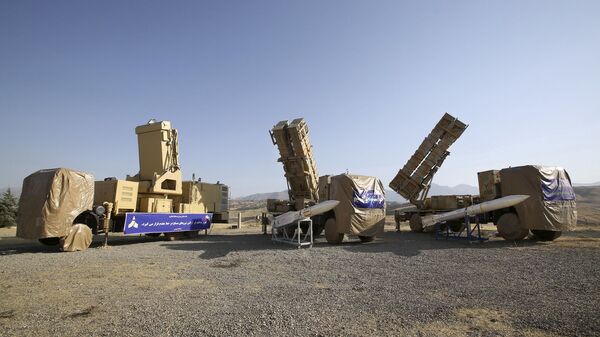Iran will react with force to the slightest violation of its airspace, Brig. Gen. Qader Rahimzadeh, deputy commander of the Khatam al-Anbia Air Defence Base, the central headquarters of Iran’s air defences, has announced.
“The country’s airspace is among our red lines and, as enemies have experienced in the past as well, the smallest violation will be met with the air defence forces’ crushing and fiery response,” Rahimzadeh said, his remarks cited by Tasnim.
The deputy commander informed his US counterparts that the Islamic Republic’s aerial surveillance capabilities are sufficient to cover ‘the entire range of movements’ by any regional and extra-regional air forces, including the US bombers which the Pentagon recently deployed to fly missions 150 km from Iran’s frontiers.
On Thursday, Washington announced the deployment of two B-52H Stratofortress strategic bombers, capable of carrying both conventional and nuclear munitions, from Barksdale Air Force Base in Louisiana to the Middle East on a 36-hour-long mission. The bombers were said to have flown over Saudi Arabia, Bahrain and Qatar during the operation, and their flight was described explicitly as a “direct message of deterrence” to Iran. Saudi, Bahraini and Qatari jets were reported to have flown alongside the B-52s during portions of their journey.
Rahimzadeh assured that all aerial activity near Iran was under constant surveillance for any hostile activity, saying that “Iranian air defences monitor their movements moment by moment," and adding that “the air defence analyses these movements, and devises and implements proportional plans after learning about the enemies’ (potential) targets and behaviour.”
Iran’s Air Defence Capabilities
Iran prides itself for its homegrown military surveillance capabilities, having created everything from vehicle-mountable 3D phased-array radars able to detect small planes, drones, and even micro-air vehicles (MAVs) to larger, strategic 3D phased-array systems with ranges between 400 and 800 km. The Islamic Republic also has an active space surveillance programme, with its Noor military satellite recently snapping high-resolution images of the US Central Command home base at Al-Udeid, Qatar following derision by Pentagon officials about the spacecraft being a mere ‘tumbling webcam in space’.
Rising Tensions
The US bomber deployment comes amid rising regional tensions in the wake of the November assassination of Iranian nuclear physicist Mohsen Fakhrizadeh. Tehran blamed Israel for the killing, and threatened revenge. Israel neither refuted nor confirmed the allegations, but has braced for an Iranian response of some kind. On Friday, CNN reported that US forces in the Middle East were similarly preparing for possible attacks against troops and diplomats in Iraq by local pro-Iranian Iraqi militias.
Earlier, US media reported that Iran itself was preparing for possible US aggression by the Trump administration amid reports that the president had given his officials a carte blanche to bully, “squeeze and punish” Tehran, so long as it doesn’t “risk World War III”.




